
Imaging is an important part of a health check because it can detect potential issues in the body that are invisible to the naked eye. Nonradiative acoustic/electromagnetic waves can be used in ultrasound and magnetic resonance imaging (MRI), or minimum effective ionising radiation doses in X-ray and computed tomography (CT).
The Diagnostic Imaging Centre at Precious Medical focuses on the use of modern technology to help you and your doctor manage your health effectively. The imaging equipment we offer is derived from years of research and development in the field of diagnostic imaging. Read on to learn more about our technology and equipment.
Digital X-Ray
Chest X-rays are an effective screening tool for diseases such as tuberculosis, tumours and cancer. Frequent smokers, especially those with a family history of cancer and persistent cough, should consider a lung CT scan.
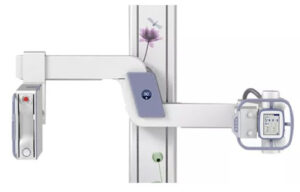 Ultrasound
Ultrasound systems provide scalable imaging for a range of critical areas such as abdomen, pelvis, heart, vascular, gynaecological, breast, prostate and musculoskeletal.
Ultrasound
Ultrasound systems provide scalable imaging for a range of critical areas such as abdomen, pelvis, heart, vascular, gynaecological, breast, prostate and musculoskeletal.
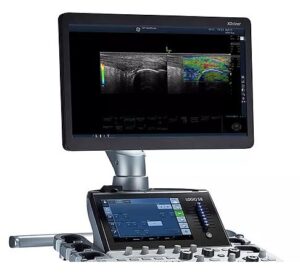 Mammography
Mammography is an x-ray imaging method that examines the breast for early signs of breast cancer. Mammograms are recommended annually for women aged 40 to 49 and every two years for women aged 50 to 69.
Mammography
Mammography is an x-ray imaging method that examines the breast for early signs of breast cancer. Mammograms are recommended annually for women aged 40 to 49 and every two years for women aged 50 to 69.
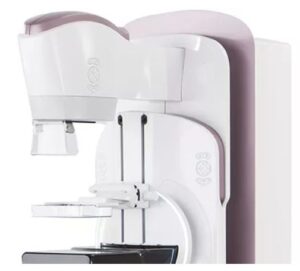 Bone Density Test (BMD)
A bone density test is a non-invasive X-ray scan that assesses bone density and body mass composition and is used to screen for osteoporosis. Osteoporosis is considered a "silent" disease because symptoms of osteoporosis do not appear immediately. Adults 50 and older are advised to monitor their bone health.
Bone Density Test (BMD)
A bone density test is a non-invasive X-ray scan that assesses bone density and body mass composition and is used to screen for osteoporosis. Osteoporosis is considered a "silent" disease because symptoms of osteoporosis do not appear immediately. Adults 50 and older are advised to monitor their bone health.
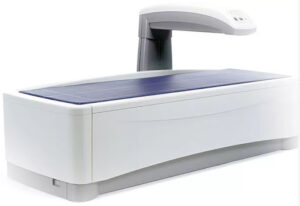 Computed Tomography (CT)
CT scans provide imaging of blood vessels and the heart at any heart rate, as well as scans of various organs including the brain, liver, kidneys, spleen, and pancreas. It can accurately diagnose disease, trauma or abnormality.
Computed Tomography (CT)
CT scans provide imaging of blood vessels and the heart at any heart rate, as well as scans of various organs including the brain, liver, kidneys, spleen, and pancreas. It can accurately diagnose disease, trauma or abnormality.
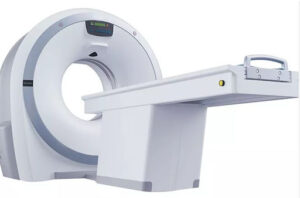 Magnetic Resonance Imaging (MRI)
An MRI scan is a test that captures detailed images of structures inside the body, using a large magnet and computer-generated radio waves. MRIs are used to evaluate, diagnose and monitor several medical conditions. It is typically used when detailed visibility of organs and tissues in the body – such as tumours, inflammation, infection, and blood vessels – are needed. For example, it can help healthcare professionals get a closer look at the brain and surrounding nerve tissue, eyes, heart, spine and spinal cord and blood vessels and more.
Magnetic Resonance Imaging (MRI)
An MRI scan is a test that captures detailed images of structures inside the body, using a large magnet and computer-generated radio waves. MRIs are used to evaluate, diagnose and monitor several medical conditions. It is typically used when detailed visibility of organs and tissues in the body – such as tumours, inflammation, infection, and blood vessels – are needed. For example, it can help healthcare professionals get a closer look at the brain and surrounding nerve tissue, eyes, heart, spine and spinal cord and blood vessels and more.
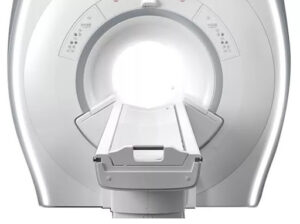
 Ultrasound
Ultrasound systems provide scalable imaging for a range of critical areas such as abdomen, pelvis, heart, vascular, gynaecological, breast, prostate and musculoskeletal.
Ultrasound
Ultrasound systems provide scalable imaging for a range of critical areas such as abdomen, pelvis, heart, vascular, gynaecological, breast, prostate and musculoskeletal.
 Mammography
Mammography is an x-ray imaging method that examines the breast for early signs of breast cancer. Mammograms are recommended annually for women aged 40 to 49 and every two years for women aged 50 to 69.
Mammography
Mammography is an x-ray imaging method that examines the breast for early signs of breast cancer. Mammograms are recommended annually for women aged 40 to 49 and every two years for women aged 50 to 69.
 Bone Density Test (BMD)
A bone density test is a non-invasive X-ray scan that assesses bone density and body mass composition and is used to screen for osteoporosis. Osteoporosis is considered a "silent" disease because symptoms of osteoporosis do not appear immediately. Adults 50 and older are advised to monitor their bone health.
Bone Density Test (BMD)
A bone density test is a non-invasive X-ray scan that assesses bone density and body mass composition and is used to screen for osteoporosis. Osteoporosis is considered a "silent" disease because symptoms of osteoporosis do not appear immediately. Adults 50 and older are advised to monitor their bone health.
 Computed Tomography (CT)
CT scans provide imaging of blood vessels and the heart at any heart rate, as well as scans of various organs including the brain, liver, kidneys, spleen, and pancreas. It can accurately diagnose disease, trauma or abnormality.
Computed Tomography (CT)
CT scans provide imaging of blood vessels and the heart at any heart rate, as well as scans of various organs including the brain, liver, kidneys, spleen, and pancreas. It can accurately diagnose disease, trauma or abnormality.
 Magnetic Resonance Imaging (MRI)
An MRI scan is a test that captures detailed images of structures inside the body, using a large magnet and computer-generated radio waves. MRIs are used to evaluate, diagnose and monitor several medical conditions. It is typically used when detailed visibility of organs and tissues in the body – such as tumours, inflammation, infection, and blood vessels – are needed. For example, it can help healthcare professionals get a closer look at the brain and surrounding nerve tissue, eyes, heart, spine and spinal cord and blood vessels and more.
Magnetic Resonance Imaging (MRI)
An MRI scan is a test that captures detailed images of structures inside the body, using a large magnet and computer-generated radio waves. MRIs are used to evaluate, diagnose and monitor several medical conditions. It is typically used when detailed visibility of organs and tissues in the body – such as tumours, inflammation, infection, and blood vessels – are needed. For example, it can help healthcare professionals get a closer look at the brain and surrounding nerve tissue, eyes, heart, spine and spinal cord and blood vessels and more.





